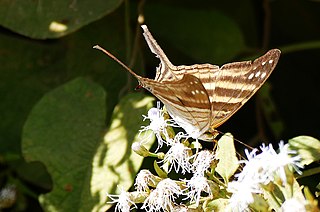
Convolvulaceae, commonly called the bindweeds or morning glories, is a family of about 60 genera and more than 1,650 species. These species are primarily herbaceous vines, but also include trees, shrubs and herbs. The tubers of several species are edible, the best known of which is the sweet potato.

Plantaginaceae, the plantain family, is a large, diverse family of flowering plants in the order Lamiales that includes common flowers such as snapdragon and foxglove. It is unrelated to the banana-like fruit also called "plantain." In older classifications, Plantaginaceae was the only family of the order Plantaginales, but numerous phylogenetic studies, summarized by the Angiosperm Phylogeny Group, have demonstrated that this taxon should be included within Lamiales.

Nyctaginaceae, the four o'clock family, is a family of around 33 genera and 290 species of flowering plants, widely distributed in tropical and subtropical regions, with a few representatives in temperate regions. The family has a distinctive fruit type called an accessory fruit or anthocarp, and many genera have extremely large pollen grains.

Cirrhophanus triangulifer, the goldenrod stowaway or tickseed moth, is a moth of the family Noctuidae. The species was first described by Augustus Radcliffe Grote in 1872. It is found in the US from New York to Florida, west to Texas and Oklahoma, north to Wisconsin. In Canada, it has only been recorded from Ontario.

iNaturalist is an American 501(c)(3) nonprofit social network of naturalists, citizen scientists, and biologists built on the concept of mapping and sharing observations of biodiversity across the globe. iNaturalist may be accessed via its website or from its mobile applications. iNaturalist includes an automated species identification tool, and users further assist each other in identifying organisms from photographs. As of 24 February 2024, iNaturalist users had contributed approximately 172,751,520 observations of plants, animals, fungi, and other organisms worldwide, and around 350,000 users were active in the previous 30 days.
Stipax is a genus of spiders in the family Sparassidae, with a single species, Stipax triangulifer, first described in 1898. The description was based on a male collected in 1894. No specimens have been found since and the species has been declared extinct. It was endemic to Mahe Island in the Seychelles.
Grammoechus triangulifer is a species of beetle in the family Cerambycidae. It was described by Ritsema in 1908. It is known from Borneo.
Geomysaprinus is a genus of clown beetles in the family Histeridae. There are at least 20 described species in Geomysaprinus.
Geomysaprinus formicus is a species of clown beetle in the family Histeridae. It is found in Central America and North America.
Geomysaprinus parumpunctatus is a species of clown beetle in the family Histeridae. It is found in North America.
Geomysaprinus posthumus is a species of clown beetle in the family Histeridae. It is found in Central America and North America.
Geomysaprinus cheyennensis, the geomysaprinus cheynnensis, is a species of clown beetle in the family Histeridae. It is found in North America.

Proteides mercurius, the mercurial skipper, is a species of dicot skipper in the butterfly family Hesperiidae. It is found in the Caribbean Sea, Central America, North America, and South America.

Marpesia chiron, the many-banded daggerwing, is a species of daggerwings, map butterflies in the family Nymphalidae. It is found in Central America, North America, and South America.
Aradus funestus is a species of flat bug in the family Aradidae. It is found in North America.
Aradus depictus is a species of flat bug in the family Aradidae. It is found in North America.
Sternechus is a genus of true weevils in the beetle family Curculionidae. There are more than 50 described species in Sternechus.
Alysson triangulifer is a species of wasp in the family Crabronidae. It is found in North America.
Geomysaprinus castanipennis is a species of clown beetle in the family Histeridae. It is found in North America.
Selkirkiella is a genus of South American comb-footed spiders that was first described by Lucien Berland in 1924. Originally placed with the Araneidae, it was transferred to the comb-footed spiders in 1972.






